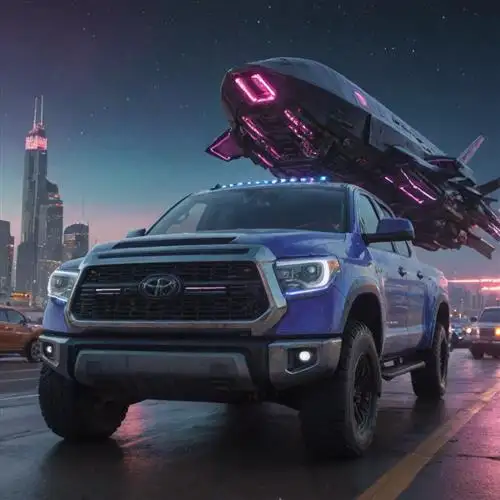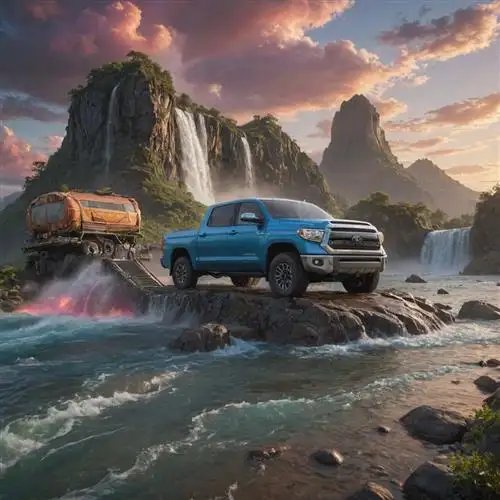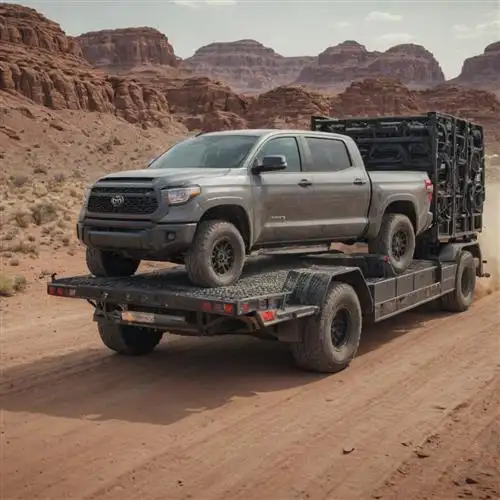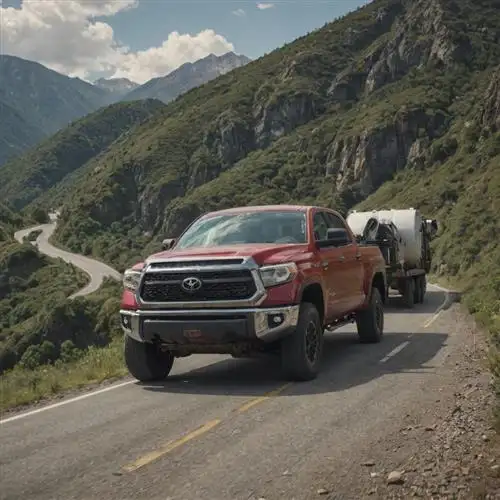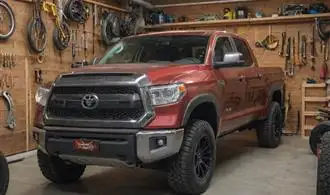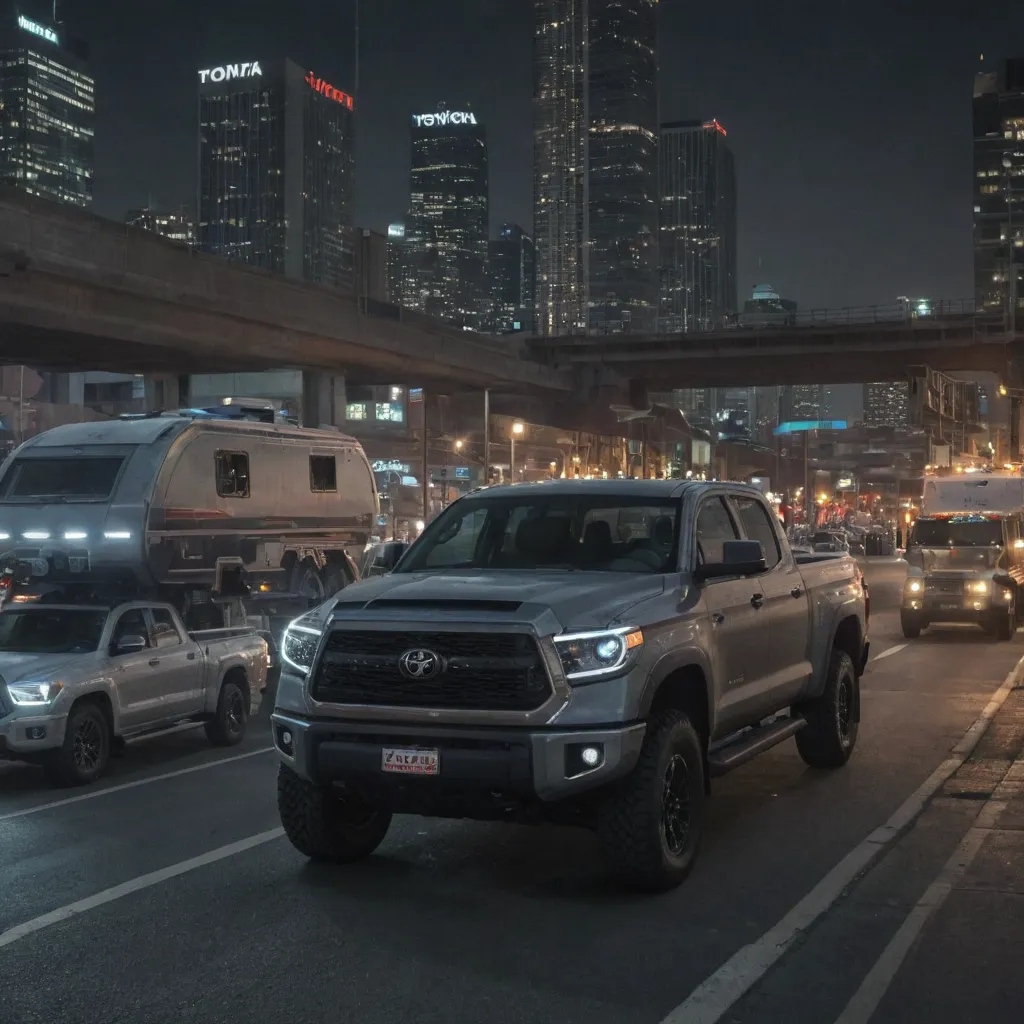
Understanding Towing Capacity
Towing capacity is a critical factor to consider when purchasing a Toyota Tundra or planning any towing activities. This specification determines the maximum weight the truck can safely haul, including the trailer, cargo, passengers, and any additional equipment. Knowing your Tundra's towing capacity can ensure you avoid overloading the vehicle, which can compromise safety, performance, and even the truck's longevity.
The Tundra's towing capacity varies depending on the model, engine, and other factors. Generally, the Tundra has a towing capacity ranging from 8,300 pounds to 12,000 pounds. However, it's essential to check the specific towing capacity for your Tundra's configuration, as this can vary significantly. You can find this information in your owner's manual or by consulting your local Toyota dealer.
- Gross Vehicle Weight Rating (GVWR): This represents the maximum weight your Tundra can safely handle, including the vehicle, passengers, cargo, and the trailer's weight.
- Gross Combination Weight Rating (GCWR): This refers to the maximum combined weight of your Tundra and the trailer, including the cargo and passengers.
- Rear Axle Ratio: The gear ratio in the rear axle can impact towing capacity, with higher ratios generally allowing for greater towing capabilities.
- Trailer Type: Different trailer types, such as a travel trailer or a fifth-wheel trailer, may have different weight and size requirements that could affect your Tundra's towing capacity.
It's essential to never exceed your Tundra's towing capacity, as doing so can lead to significant safety risks, such as poor handling, increased braking distances, and potential damage to the vehicle. Overloading can also void your warranty and increase fuel consumption, leading to higher operating costs.
Hitching the Perfect Trailer
Properly hitching your trailer is crucial for safe and efficient towing with your Toyota Tundra. Choosing the right hitch and ensuring a secure connection can make all the difference in your towing experience. Here are some key considerations to keep in mind when hitching the perfect trailer:
Hitch Type: The Tundra's towing capacity and your trailer's weight will determine the appropriate hitch type. Typical options include a ball hitch, a gooseneck hitch, or a fifth-wheel hitch. Research your Tundra's specifications and the trailer's requirements to select the right hitch that can handle the load safely.
Hitch Installation: Proper installation of the hitch is paramount. Follow the manufacturer's instructions carefully, and ensure the hitch is securely mounted to the Tundra's frame. Consider having a professional install the hitch if you're unsure about the process.
Trailer Coupling: Once the hitch is in place, the next step is to attach the trailer's coupler. Align the coupler with the hitch ball, lower it slowly, and engage the locking mechanism. Double-check that the connection is secure and that the safety chains or cables are properly attached.
Weight Distribution: Proper weight distribution is essential for stable and controlled towing. Ensure the trailer's weight is evenly balanced, with a slight tongue weight (typically 10-15% of the total trailer weight) to maintain optimal handling and braking.
Trailer Brakes: If your trailer is equipped with its own braking system, make sure it is properly connected and functioning correctly. Integrate the trailer's brakes with the Tundra's braking system for enhanced safety and control.
Safety Checks: Before hitting the road, perform a thorough safety check. Verify that all lights, turn signals, and brake lights on the trailer are working correctly. Ensure the trailer is properly secured to the hitch and that all connections are tight.
Towing Techniques and Maneuvers
Mastering the art of towing with your Toyota Tundra requires a keen understanding of various techniques and maneuvers. One of the fundamental aspects is understanding the weight distribution. Proper weight distribution ensures the stability and control of your towing setup, minimizing the risk of sway or fishtailing. Pay close attention to the weight capacity of your Tundra, the trailer's gross vehicle weight rating (GVWR), and the actual load you're towing. Distribute the weight evenly, with the majority positioned over the trailer's axles for optimal handling.
Navigating turns and corners is another crucial skill when towing. Wider turns are essential to accommodate the longer wheelbase and avoid running over curbs or striking objects. Signal well in advance, and be mindful of the increased turning radius. Employ a spotter or utilize your Tundra's camera systems to ensure a safe and smooth turning experience.
Backing up a trailer can be a daunting task, but with practice, it becomes a valuable skill. Start by understanding the relationship between your steering wheel input and the trailer's movement. Gently turn the steering wheel in the direction you want the trailer to go, and make small, measured adjustments to maintain control. Unusual Insights into Customizing Your Toyota Tundra can provide additional tips on trailer customization to enhance your backing experience.
Maintaining situational awareness is paramount when towing. Regularly check your mirrors, be mindful of your blind spots, and use your Tundra's advanced safety features, such as blind spot monitoring and rear cross-traffic alert, to stay aware of your surroundings. Additionally, adjust your driving style to account for the increased length and weight of your towing setup, allowing for longer braking distances and slower acceleration.
Maintaining Towing Stability
Maintaining Towing Stability with Your Toyota Tundra is crucial for safe and efficient hauling. The Tundra's impressive towing capacity and robust engineering make it a popular choice for those who need to tow heavy loads, but proper maintenance and techniques are essential to ensure stability and control. One of the key factors in maintaining towing stability is properly balancing the load and distributing the weight evenly.
When towing a trailer, it's important to ensure the weight is properly distributed, with the majority of the weight positioned over the trailer's axles. This helps to maintain a level ride and prevents the trailer from becoming unstable or sway excessively. Additionally, ensuring the trailer is level and the hitch is properly adjusted can greatly improve towing stability. Regularly inspecting the trailer's tires, brakes, and suspension components is also crucial to maintaining safe and stable towing.
Another important aspect of maintaining towing stability is adjusting your driving style. When towing a heavy load, it's essential to reduce your speed, increase following distance, and be extra cautious when making turns or changing lanes. Sudden maneuvers can cause the trailer to sway, potentially leading to a dangerous situation. Get Expert Advice on Boosting Toyota Tundra Performance to further enhance your towing experience.
Equipping your Toyota Tundra with the right towing accessories, such as a weight-distributing hitch or sway control system, can also greatly improve towing stability. These accessories help to distribute the weight more evenly and prevent the trailer from becoming unstable, even in challenging driving conditions.
Towing Safety and Legal Considerations
Towing with your Toyota Tundra requires careful consideration of safety and legal regulations. Ensuring the proper setup and following best practices can make all the difference in a safe and seamless towing experience.
When it comes to towing safety, the Tundra's towing capacity is a critical factor. Thoroughly review your vehicle's owner's manual to understand the maximum weight it can safely tow. Exceeding the recommended capacity can compromise handling, braking, and stability, putting you and others on the road at risk.
Proper trailer setup is essential for towing safety. Ensure the trailer is securely hitched, with all safety chains and electrical connections properly in place. Check that the trailer's brakes, lights, and turn signals are functioning correctly. Distribute the load evenly and within the trailer's weight rating to maintain balance and control.
Driving dynamics change significantly when towing a trailer. Increase following distances, allow more time for braking, and be mindful of wider turning radii. Avoid sudden maneuvers, and be prepared for the increased weight and length of your combination when navigating turns, merging, or changing lanes.
Familiarize yourself with the towing laws and regulations in your area. These can vary by state or even local jurisdiction and may include requirements for trailer registration, brake systems, lighting, and more. Failure to comply can result in costly fines or even legal consequences.
Consider investing in specialized towing equipment, such as a weight-distribution hitch or a trailer brake controller, to enhance stability and control. These accessories can significantly improve the handling and safety of your towing setup.
Regularly inspect your towing equipment, including the hitch, safety chains, and electrical connections, to ensure everything is in good working order. Replace any worn or damaged components promptly to maintain safe towing conditions.

